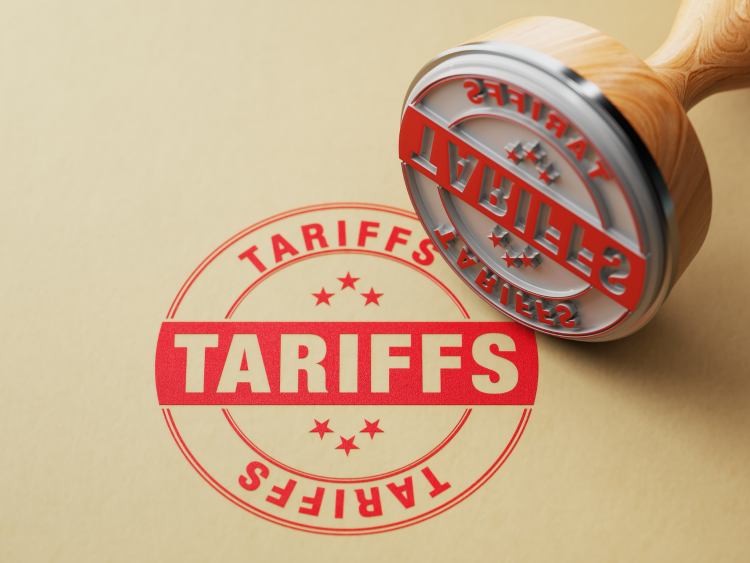Final Thoughts

13 June 2025
FT - The art and science of Midwest Duty-Paid Premium discovery
Written by Greg Wittbecker
The imposition of the 50% tariff under Section 232 sent everyone to their calculators to determine what the replacement value of Midwest duty paid premiums “ought to be “. The author was no exception. Let’s start though by being clear about what replacement value represents.
Any trader worth his/her salt is trained to adhere to the principle of replacement value when managing their risk position in outright price or premium position. You need to know the replacement cost of what you are selling today. You also need to understand how that replacement cost will impact the position you DON’T sell today.
When calculating replacement cost, let’s be clear. The process tells us what a given commodity “ought to be worth”, not what it will subsequently trade at.
Europe teaches U.S. something about duty-unpaid versus duty-paid trading
The best example I can give you is the long-term history of European aluminum prices. Europe has had import tariffs dating back to the 1960’s when the EU was formed. The duty was 6.2 % until 2007 when it was reduced to its present 3%. So, European players in aluminum have dealt with duty unpaid and duty paid pricing for a very long time. Those prices are expressed on a CIF (Cost Insurance Freight) Rotterdam basis, as this is the primary port of entry for seaborne imports to the EU and this is the benchmark for all European trade. It’s the same as our use of Midwest.
From firsthand experience trading these CIF Rotterdam markets, it is extremely rare for the value of duty-paid metal to reflect the full replacement cost of buying duty unpaid metal and paying the 3% duty.
Example, last week, CIF Rotterdam duty unpaid metal was quoted at $150-160/mt versus duty paid metal at $180-205/mt. For purposes of simple calculation, I will take the offer side of both markets and apply the 3% duty on an underlying LME cash price of $2,450/mt:
$2450+ $160 = $2,610 x 3% = $2,688.30
If you then compare the computed value of the implied duty paid price to the underlying LME, you have an implied duty paid premium of $238.30/mt.
The market is quoted at $205/mt, which is only 86% of replacement. So why is this?
This is where we cannot lose sight of the impact of fundamental supply and demand on the tradable value of duty paid metal, be it Rotterdam or Midwest.
The Rotterdam duty paid market is continually handicapping the following:
- Is the supply of exempt, duty-free supply to Europe going up or going down? This means are countries such as CANADA, Norway, Ghana or Mozambique (who are exempt into the EU) shipping more or less metal to Europe. This factor is especially important now as the Canadian primary producers assess the relative returns on their production shipping into the U.S. or the EU. Current sentiment in the market is that Canada is going to launch more metal towards the EU in reaction to the 50% U.S. tariff. This is weighing on the duty paid premium.
- Is demand for duty paid metal going up or down? There are two components of this demand. One, for downstream fabricators producing for European consumer markets, they must purchase duty paid metal to meet domestic needs. If domestic demand in Europe is lagging, their demand pull on duty paid premiums is weak. There seems to be some evidence of that occurring now.
The second component of European demand is downstream fabrication demand for subsequent export. Europe is a big exporter to the U.S. in everything from autos, high end machine tools and extrusions that consume a lot of aluminum. When a European fabricator knows, they are going to export, they can buy duty unpaid metal rather than duty paid because they can apply for exemption from the 3% duty because they are exporting the finished product. This places more demand on duty unpaid versus duty paid.
I don’t want to belabor the workings of the European market, but simply to make the point that the differential between their duty unpaid and duty paid markets does not reflect full replacement cost of the duty.
If the market traded at 103% of duty unpaid, downstream fabricators would be totally indifferent about paying the duty paid price. They could buy duty unpaid and simply pay the duty. They don’t do that because they know that supply-demand variables always allow duty paid metal to be purchased at less than full replacement cost.
Now let’s apply these lessons of European history to the U.S.
Estimates of how to compute duty unpaid are currently flawed
One of the themes coming out of the major trade conference in Chicago last week was the general agreement that the major trade journal that reports Midwest premiums has gotten it wrong in publishing an implied duty paid premium. It is understandable that it is very difficult to track actual transactions in this volatile environment. However, trying to back into the implied duty unpaid premium from Midwest duty paid transactions may be misleading.
The implied duty unpaid premium is reverse engineered by taking the reported duty paid transactions and deducting interior logistics costs and the 50% duty.
The problem with this approach is that the duty (estimated at $0.55/lb during the week of the conference) plus logistics would have led to the implied duty unpaid premiums being below LME cash. That is impossible, as any producer, be they Canadian or seaborne, would simply sell to the LME and deliver their metal versus taking a discount to LME.
The market would be best served by NOT trying to reverse engineer the implied duty unpaid premium but use the following two options:
- The FOB Canadian smelter premium for duty unpaid metal derived from the Rotterdam duty PAID market premium less freights from Canada. The Rotterdam duty paid market is the market that Canadian metal will sell into given its duty exempt status to the EU. It is a liquid, well-traded market that provides a much cleaner price signal. Canada supplies 70% of U.S. imports so it is appropriate to index to their replacement cost.
Rotterdam duty paid is $205/mt. Ocean freight from Canada to Rotterdam is approximately $85, meaning FOB Canada is $120/mt or $0.0540/lb. If we assume $0.05/lb for freight to the Midwest…you have replacement of $0.1040/lb for duty unpaid. - The CIF New Orleans or Baltimore premium for duty unpaid metal derived from the CIF Rotterdam duty unpaid premium plus a freight differential. Seaborne imports represent the remaining 30% of U.S. primary supply. Exports from Argentina, Brazil, India and the Middle East look at Rotterdam duty unpaid as their alternative to shipping to the U.S. It is appropriate to key CIF US replacement off Rotterdam with an appropriate allowance for higher freights into the U.S.
Rotterdam duty unpaid is $160/mt or $0.0725/lb. It is reasonable to assume that freights to the U.S. might be $0.0250/lb higher than Rotterdam. That would give a CIF U.S. premium of $0.0925/lb.
The market needs to stop obsessing over replacement cost Midwest
The market tends to be very efficient at figuring out replacement cost and we believe that one or both of the above 2 approaches will eventually rule determining duty unpaid replacement and the translation to duty paid.
Either approach will deliver an implied duty paid replacement of around $0.70/lb. Midwest is reported currently to be around $0.60/lb, having gone as high as $0.68/lb this week before retreating. A $0.60/lb premium would reflect a 15% discount to full replacement.
European history says that is not a wide distortion of the spread between unpaid and paid. Fundamentals will eventually drive that differential.
Another theme we heard in Chicago was that the accumulated inventories brought in ahead of the Section 232 increases are being depleted. Many observers believe by 3rd Quarter we may exhaust those stocks, and the market will need to reprice Midwest premiums closer to full replacement.
The current 15% discount is likely to NARROW as the market throws off price signals to give both Canadian and seaborne supply flowing to the U.S.






